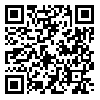Volume 28, Issue 1 (2021)
AIJH 2021, 28(1): 37-65 |
Back to browse issues page
1- Tarbiat Modares University, Tehran
2- Tarbiat Modares University, Tehran , ahmadp@modarecs.ac.ir
3- Iranian Encyclopedia Foundation.
2- Tarbiat Modares University, Tehran , ahmadp@modarecs.ac.ir
3- Iranian Encyclopedia Foundation.
Abstract: (2042 Views)
Based on Islamic era sources, inscribed robes were one of the valuable art works during the Ale- Buyid period that were gifted to courtiers in official ceremonies as a sign of honor for their loyalty. These robes normally contained the name of the ruler. In the Ale-Buyid period, a combination of both Shi’a and Iranian-Sasanian led to the creation of a new style of art. From the remains of that period, number of textiles with inscriptions was discovered from two enclosures of Broj-e Nagharekhane and Bibi Shahrbanu in Ray. According to archaeological reports, the scripted textiles were used as shrouds or to cover graves. The inscriptions are in both plain and ornamental Kufic styles and in most of the cases, beside its function to convey a massage, had decorative functions too. Based on 25 scripted textile pieces from Ale-Buyid period which mostly were discovered from Ray, this research attempts to reveal the meaning and also the literature sources of the inscriptions. The data has been collected through library studies. This research shows that the texts contain prayers, ethical massage and some poems from Arab poets from the first Hijri to the Ale-Buyid period. In some cases, embroidery has changed the shape of the letters to create a rhythmic pattern in the text and for this reason; the text is illegible or contains a visual or written error. This shows that writing was as important as its content. Most of the fabrics obtained based on the content were robes, and the content of the inscriptions often had an individual audience and a prayer sentence.
Article Type: مقالات علمی پژوهشی |
Subject:
Arts and Humanities (General)
Received: 2020/01/25 | Accepted: 2020/06/25 | Published: 2021/03/21
Received: 2020/01/25 | Accepted: 2020/06/25 | Published: 2021/03/21
| Rights and permissions | |
 |
This work is licensed under a Creative Commons Attribution-NonCommercial 4.0 International License. |


